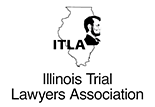
Infant Torticollis Attorney Guide
Torticollis (also known as wryneck) is a condition experienced in newborns caused by either the way a baby was positioned in the uterus before childbirth or as a result of something that puts pressure on a muscle of the neck during childbirth, resulting in a tilted neck and trouble turning the neck.
Torticollis is not an uncommon birth injury – it occurs in about 1 in every 250 births – and can either be present at birth or it can develop over the first three months after birth.
Treatment generally includes stretching and therapy, much of which can be performed at home.
What Causes Infant Torticollis?
Table of Contents
Torticollis that is present at birth is usually caused by abnormal positioning in the birth canal, which puts pressure on the muscles of the neck.
When torticollis turns up later, it is usually related to the use of assisted birthing devices such as forceps or vacuum extractors, which can put extra pressure on one side of the sternocleidomastoid muscle, which can be found on both sides of the neck, running from behind the ears to the collarbone. It is the muscle we notice when we’ve slept wrong and wake up with a stiff neck, and it controls how we move our heads up and down and side to side.
Torticollis is also associated with other things that can cause trauma to the muscle during the birthing process, such is aggressive pulling to help the baby exit the birth canal manually.
The extra pressure causes the muscle to tighten, making it more difficult for the neck to turn.
Some other, less common, causes of torticollis include congenital abnormalities of the bones of the neck, a condition that is often accompanied by a shortened neck, shorter arms and legs and forms of dwarfism including achondroplasia, multiple epiphyseal dysplasia, a genetic disorder that causes the ends of bones to grow longer, negatively impacting muscles, and Morquio syndrome, a progressive, genetic disease in which the body is unable to break down the sugar molecules required to build bone, cartilage and connective tissues.
Symptoms of Torticollis
While torticollis is usually painless, it can be detected by a few distinct symptoms, including:
- The heads of babies with torticollis tilt in one direction while the chin tilts to the other
- Babies will look over one shoulder rather than turning their heads.
- Babies with torticollis will usually prefer breastfeeding on one side only.
- Babies with the disorder may develop a flat head, called plagiocephaly, from lying in the same direction.
- Babies may develop a knot at the site of the muscle strain.
- Babies with torticollis will have difficulty turning their heads completely and often become frustrated when they are unable to do so.
- About 10 to 20 percent of children born with torticollis also have hip dysplasia.
Problems Associated with Torticollis
Because torticollis limits a baby’s ability to turn his or her head, there are problems with vision, hearing and interaction.
Potential problems include delayed cognitive development, weakness, difficulty with balance and an asymmetry of the spine caused by compensation for the tilted neck. If the spine is out of alignment, potential orthopedic problems are possible.
How is Torticollis Treated?
In minor cases of torticollis, a physical therapist can provide exercises to help gently stretch your child’s neck muscle, a process that is usually complete by the time a child turns a year old.
Some simple behavioral changes including positioning a baby so that he or she is forced to turn in the direction that he or she normally doesn’t, such as when in a crib or on a changing table, can help reinforce stretching exercises.
Creating a play environment that encourages the baby to turn his or head in the direction associated with the tight muscle can also help improve the condition.
The use of baby equipment such as swings or car seats should be kept to a minimum.
If the disorder has not resolved itself by the time a child is 18 months old or so, the condition may require surgical intervention by an orthopedic surgeon.
In some cases, however, when torticollis is caused by an abnormality to the cervical vertebrae – the bones can be either fused together or abnormally formed, a condition called Klippel-Feil syndrome – rather than muscle damage, stretching may not only be ineffective at helping ease symptoms, but it can also be potentially dangerous.
Should I See an Attorney?
If your child’s torticollis was caused by damage to the sternocleidomastoid muscle during the birthing process, it is most likely the result of a preventable birth injury.
An attorney with experience in birth injuries will be able to help you determine what caused your child’s condition, and whether or not your case is worth filing a claim against you and your baby’s medical care providers.
If you hire an attorney, you should expect them to go to bat for you and your child, helping to recover the costs associated with physical therapy, surgery or other medical interventions required to help your child recover from the birth injury.












